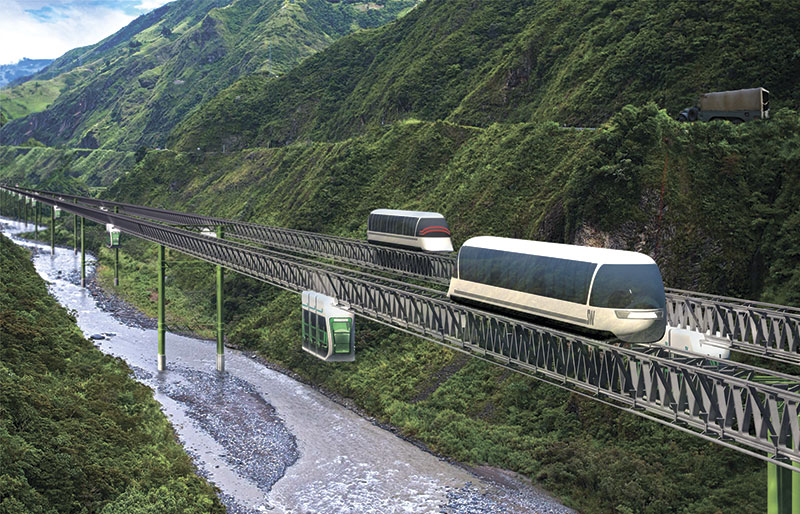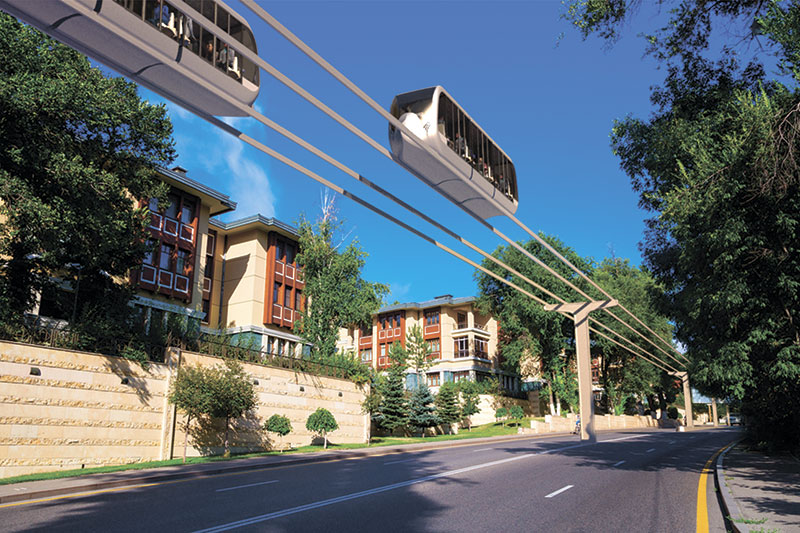|
The network of cargo and passenger SkyWay
The network of cargo and passenger SkyWay includes three components:
- Interregional SkyWay.
- Regional SkyWay.
- City SkyWay.
1. Interregional SkyWay
This is a string-rail overground transport system of the "second level" designed for high-speed traffic at the operational speed of up to 500 km/h and a carrying capacity of more than 100 000 passengers per day.
Advantages:
- 10-15 times less costly than monorail, surface mini-metro, high-speed railway and a magnetic levitation system;
- 2-3 times less costly than any traditional surface transport.
Basic features:
- estimated speed - up to 500 km/h;
- capacity - up to 100 passengers or more;
- length of span - 30-50 m and more (up to 2 km);
- height of supports - 6-10 m and more;
- maximum declivity of the way - 15%;
- diesel fuel consumption - up to 0.7-0.9 liter per 100 passenger×km at the speed of 360 km/h;
- the cost of building a high-speed cargo-and-passenger track is from 2-3 million USD/km.

2. Regional SkyWay
Basic features:
- estimated speed - up to 300 km/h;
- capacity - up to 100 passengers and more;
- length of span - 30-50 m and more (up to 2 km);
- height of supports - 6-10 m or more;
- maximum declivity of the way - 30%;
- diesel fuel consumption - up to 0.5- 0.7 liter per 100 passenger×km at the speed of 360 km/h;
- the cost of building a high speed cargo-passenger route - from 1.5-2 million USD/km.

3. City SkyWay
Basic features:
- passenger transportation at the operational speed of up to 150 km/h;
- carrying capacity - more than 20,000 passengers per hour;
- 20-30 times less costly than subway.
This system fits perfectly into the existing infrastructure of any metropolitan city, solving transport problems of big cities due to the arrangement of a network of high-rise buildings with overland transport connection between them.
|







